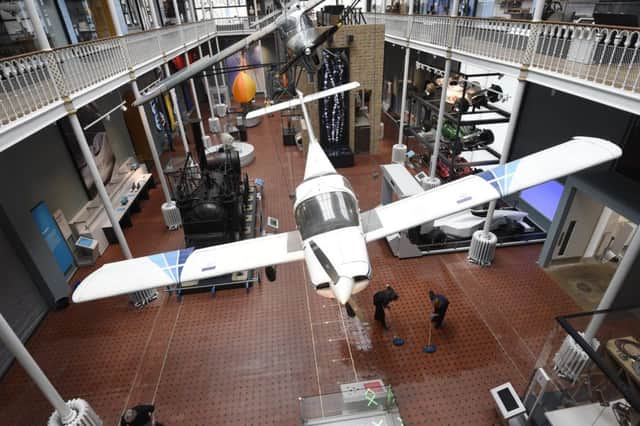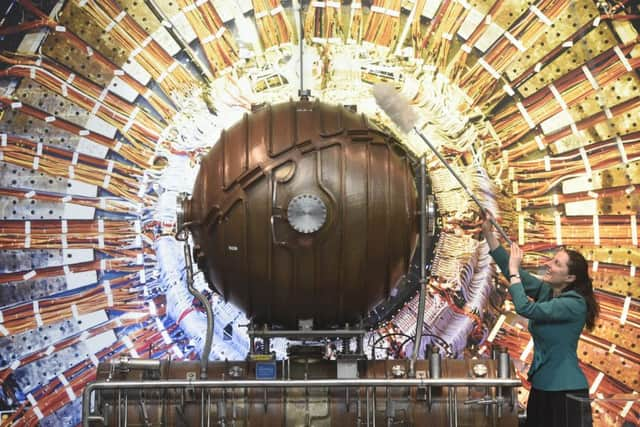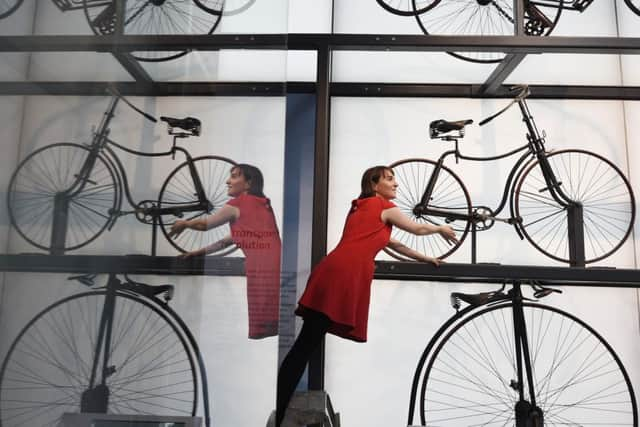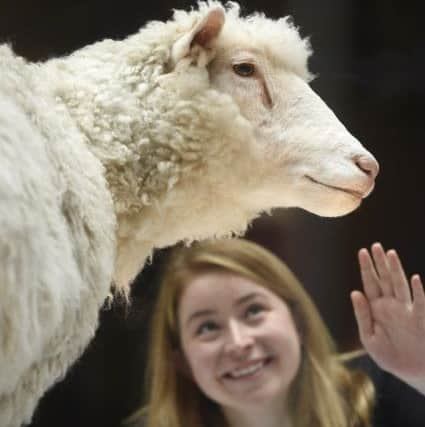National Museum of Scotland's £14m revamp is unveiled


Now the National Museum of Scotland has heralded the launch of a new era by unveiling a series of showcases of world-leading inventors, scientists, medical pioneers, artists and fashion designers.
The Victorian attraction has lifted the lid on 10 new galleries where more than 3000 objects have been brought under the one roof for the first time.
Advertisement
Hide AdAdvertisement
Hide AdAround three quarters of them are either going on display for the first time in at least a generation or have never been seen before, including a host of special acquisitions.


Cutting-edge innovations, new interactive features and state-of-the-art displays have been added to the attraction, which has created around 40 per cent more exhibition space for objects drawn from its science, technology, art, fashion and design collections.
The transformation of galleries more than 50 years old, as well as little-used or closed off parts of the Chambers Street building, has been carried out over the last 18 months after the revamp won the backing of the Heritage Lottery Fund and the Scottish Government.
The project, overseen by award-winning architect Gareth Hoskins until his death earlier this year, is expected to provide a huge boost to the number of visitors to the museum, which attracted 1.56 million people last year and is currently second only to Edinburgh Castle in Scotland’s league table of attractions.
Advertisement
Hide AdAdvertisement
Hide AdThousands are expected to converge outside the museum - already the busiest in the UK outside London - on Friday for an all-day street party, complete with samba and piping bands, at a new public piazza which has been created to help mark the 150th anniversary.


The 10 new galleries have been unveiled five years after a huge overhaul of the museum’s great hall, the creation of new underground entrances and new spaces for more than 8000 exhibits. A final phase of a 15-year, £80 million masterplan, due to be completed by 2018, will see new displays created for Ancient Egypt and East Asian treasures. By the time they have opened, attention will be turning to the displays in the museum’s modern extension, which by then will be around 20 years old.
Dr Gordon Rintoul, director of the museum, said: “We’ve been progressively modernising the building by restoring its wonderful Victorian architecture, bringing lots of our collections out of storage and onto public display, and creating what we believe to be one of the best museum experiences anywhere in the world.
“We wanted to truly engage the public and tell some of the stories behind the wonderful collections we have in Scotland. These galleries contain a huge number of world firsts, from the first pneumatic tyre, developed by John Boyd Dunlop to Dolly the sheep.
Advertisement
Hide AdAdvertisement
Hide Ad“Very few people know that we have one of the best fashion collections, not just in the UK, but across Europe. This is the first time we’ve been able to display it in a comprehensive way.”


Some 62 truckloads of objects were transported from the museum’s collection centre on the Granton waterfront to Chambers Street before work started to fit out the new galleries last October.
Major new sections of the museum are devoted to nuclear, wind and wave energy, engineering, transport, communications, 3D printing, the human body and robotics.
Highlights include Britain’s oldest aircraft and its first ever motorbike, an x-ray machine used in shoe shops in the 1930s, a “Black Knight” rocket, a restored wall and fireplace rescued from the demolished 17th century Hamilton Palace, the world’s first bionic arm, an Enigma machine used to encode war-time messages and a two tonne copper cavity from the famous CERN particle collider in Switzerland.
Advertisement
Hide AdAdvertisement
Hide AdAlso on display are the world’s first computer controlled machine tool, which was used at the Ferranti factory in the 1960s, the world’s first bionic arm, which was invented in Edinburgh in 1988, an electric switchboard from the Edinburgh Playhouse dating back to the 1920s, a section of cable from the Forth Road Bridge and a model of the new Queensferry Crossing.


Among the Scots showcased are Professor James Black, the Nobel Prize winner who discovered beta-blockers and the first anti-ulcer drugs, Alexander Graham Bell, inventor of the telephone, John Logie Baird, who was behind the first television set, and Robert Stirling, the minister who invented the “hot air engine.”
Fashion designers celebrated including Vivienne Westwood, Alexander McQueen, Zandra Rhodes, Holly Fulton and Hussein Chalayan, as well as collectors like Frances Farquharson, the former fashion editor of Vogue magazine in the 1930s, who married a Highland laird, and Bernat Klein, a Serbian textile designer and painter who helped put Scottish fashion on the map in the 1960s.
The museum has also brought together work by artists like Phoebe Anna Traquair and Pablo Picasso, who are represented in dedicated sections by a grand piano and a glass sculpture of a goat respectively, as well as the celebrated Glasgow architect and designer Charles Rennie Mackintosh and Leith-born Eduardo Paolozzi, a leading founder of the 1950s “Pop Art” movement.
Advertisement
Hide AdAdvertisement
Hide AdDr Rintoul added: “It’s important for any museum or gallery to reinvent itself and move forward. In our case, as technology moves on there is the chance to do things differently. And when you put new things on display it attracts people to come back in again.”